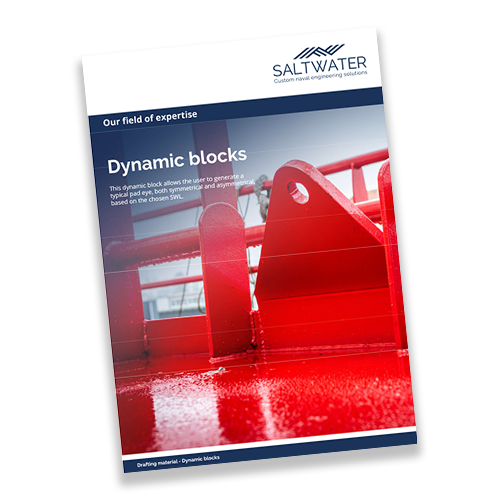
Drafting material
Dynamic blocks
Our engineers and specialists will share their knowledge and experience in the naval industry right here.
A pad eye is typically used as a connection point between an object and a shackle to facilitate the lifting and/or fastening of the object. Typically, pad eyes are dimensioned according to the required SWL (Safe Working Load) of the specific pad eye. This dynamic block allows the user to generate a typical pad eye, both symmetrical and asymmetrical, based on the chosen SWL. The actual hole diameter, plate thickness and other dimensions will automatically change according to the chosen SWL.
Additionally, an engineer should check the pad eye design to ensure that it meets the stress requirements according to standard industry guidelines. Not only do the industry guidelines define stress levels; but also shackle to hole ratios and main dimensions need to meet certain requirements. Items that need to be checked by means of calculations are:
Pad eye calculations (not included in the dynamic block)
- Bearing stress
- Shear stress
- Tensile stress
- Combined bending and tensile stress – Von-Mises stress
- Plate thickness and dimensioning
The dynamic block allows other draftsmen to include a pre-determined pad eye into the designs that will then consequently be checked by a structural engineer to ensure that it meets all the requirements.
Get in touch!
Do you have questions or need additional information?
Contact our specialists, they are happy to assist!
